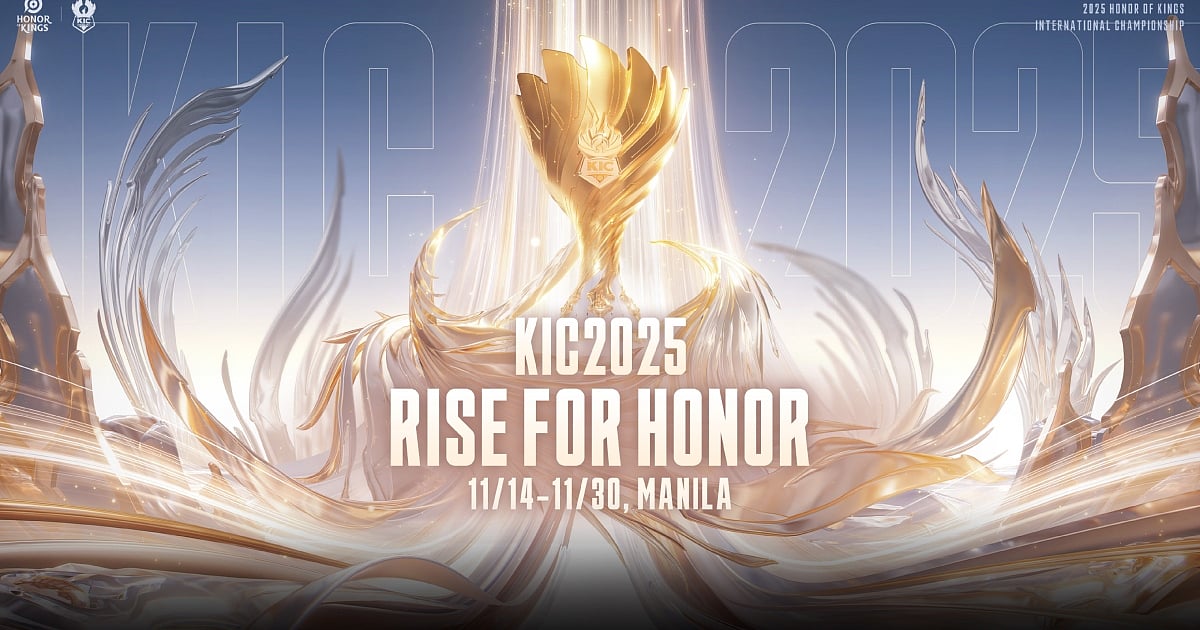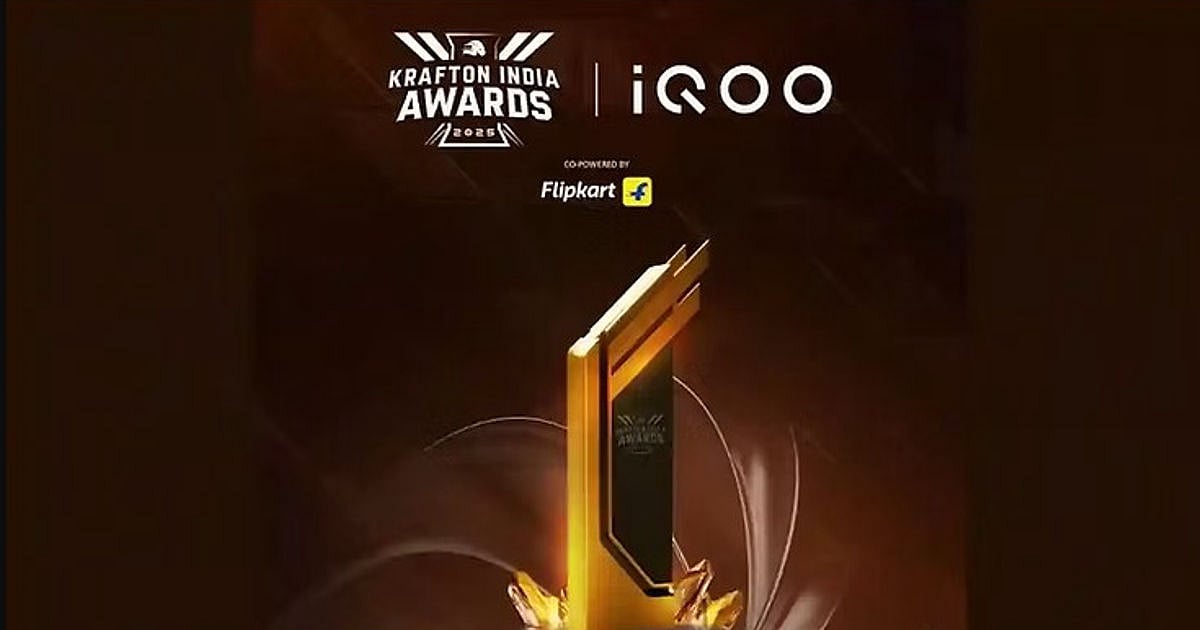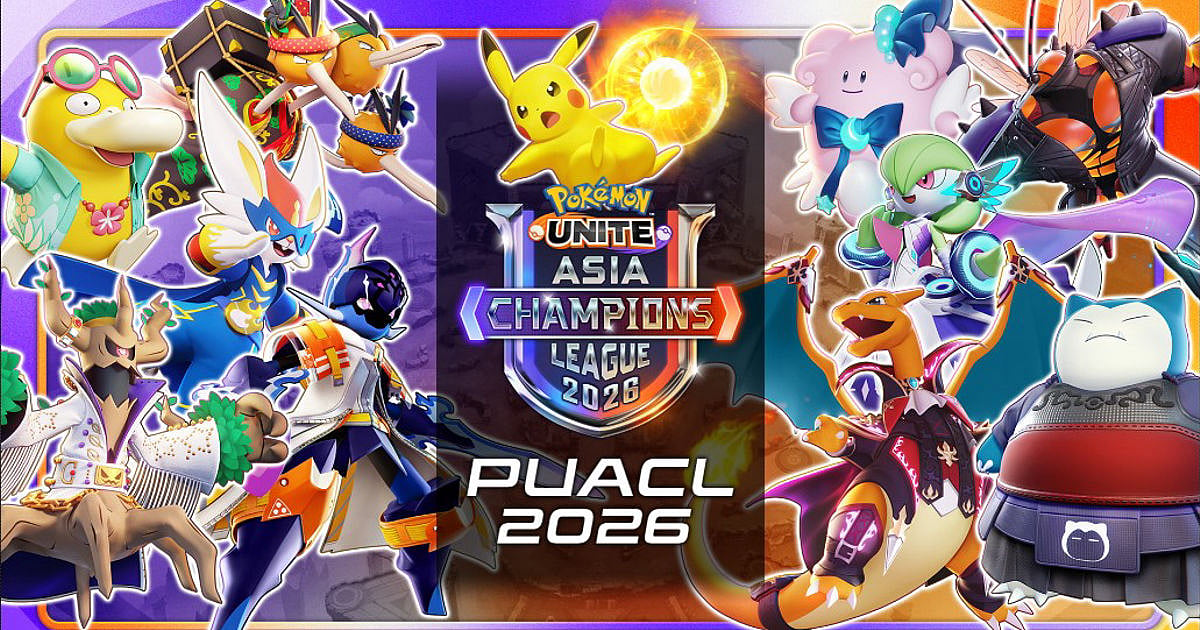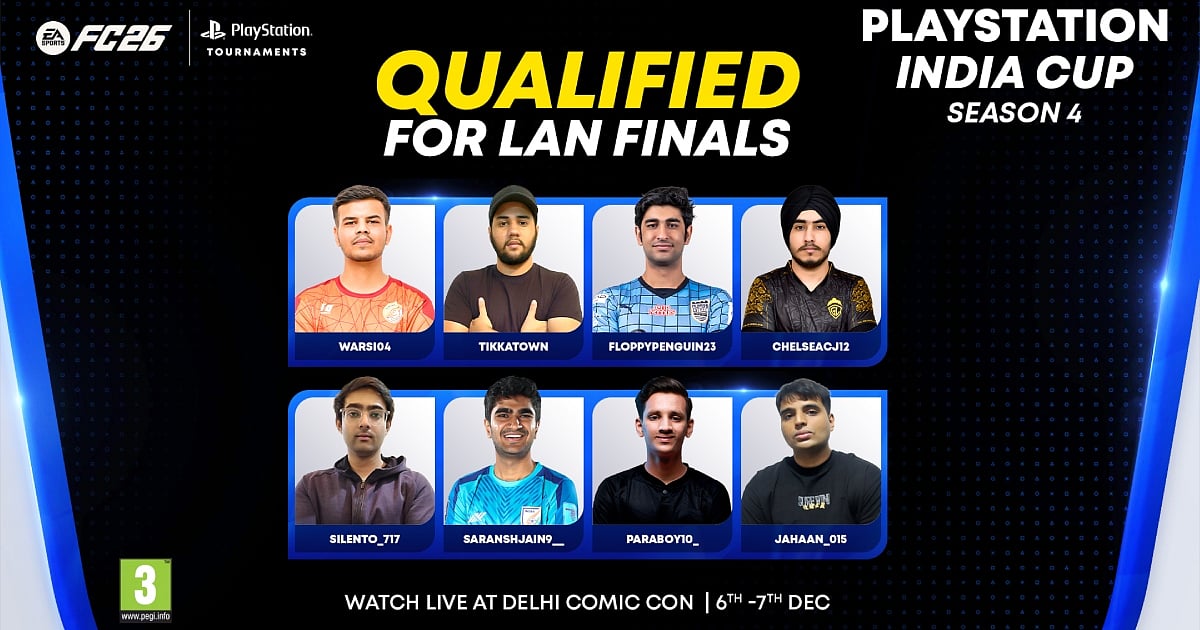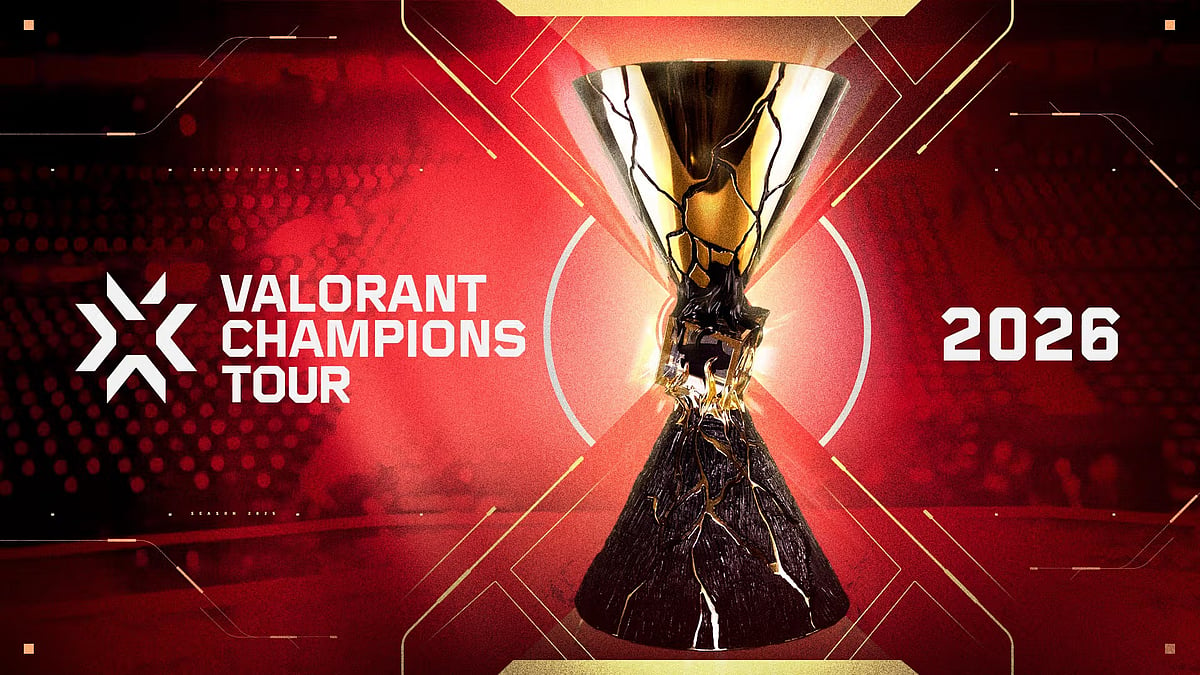
Riot Games just revealed its blueprint for VCT 2026.
VCT 2026 Roadmap: All The Major Changes Coming to VALORANT Esports
How a new 'Path to Champions' is opening the door for the next generation of stars.
Highlights
- VCT 2026 is expanding to new global cities and shifting to high-stakes, bracket-only formats.
- A new system gives top Tier-2 teams a direct path to qualify for the world championship.
- Riot is adding financial support for Tier-2 to create a more open and sustainable pro scene.
Riot Games just dropped the blueprint for the 2026 VALORANT Champions Tour (VCT), and it’s more than just a seasonal update; it’s a radical overhaul. The entire competitive ecosystem is being re-engineered with more global events, higher stakes, and a game-changing new path for underdog teams to reach the world stage.
For players, fans, and especially investors, these changes signal a pivotal shift in VALORANT esports. Riot is temporarily shelving its Ascension system, blowing up the old tournament formats, and taking the VCT on a global tour. This is a strategic gambit designed to build a more open, dramatic, and financially sustainable future for the sport.
Here’s your complete guide to every massive change coming next year.
More Cities, More Action: The VCT Goes Global
The VCT is breaking new ground in 2026, taking its premier international events to fresh territories to cultivate new fanbases and cement its status as a truly global esport.
Master's Santiago, Chile: For the first time, a VCT global event will land in Latin America. This marks Riot’s first return to South America since LOCK//IN São Paulo in 2023 and serves as a major nod to one of the game's most passionate and foundational fanbases.
Master's London, UK: The VCT will make its United Kingdom debut. This move taps into a mature and highly developed European esports market that has been eagerly awaiting a top-tier VALORANT event of its own.
Champions Shanghai, China: The season finale returns to the city that shattered viewership records during Masters 2024. This will be the first time Riot crowns a VALORANT world champion in China, a strategic move to solidify the region as a cornerstone of the esport’s future growth.
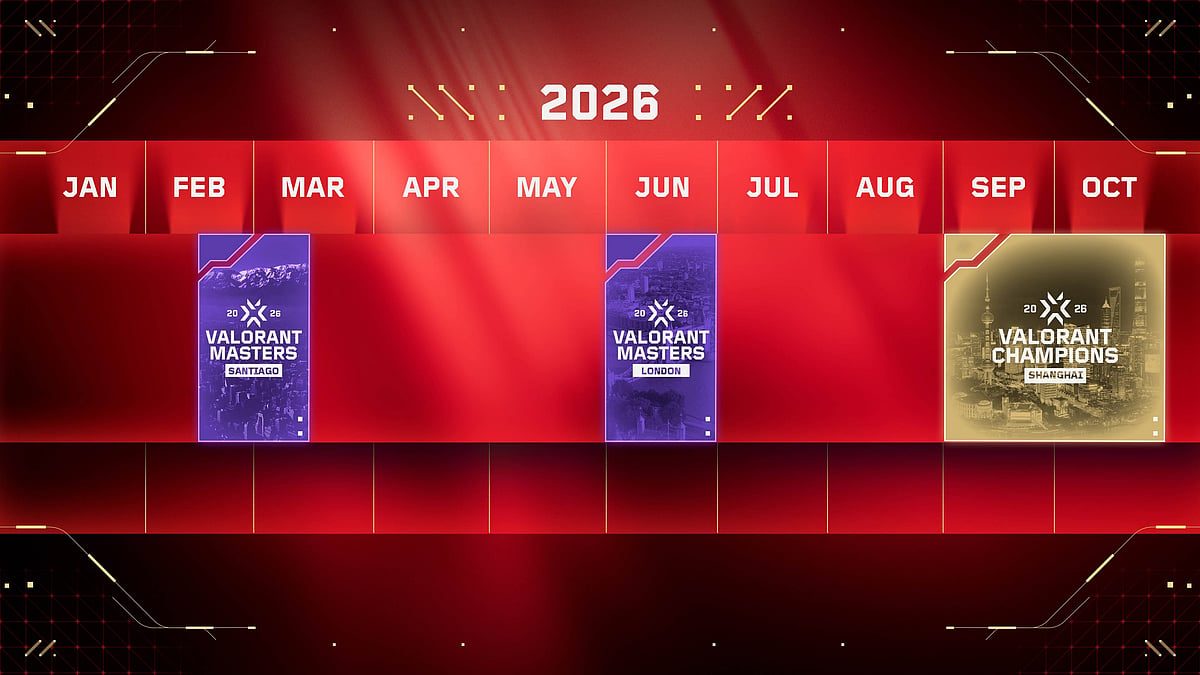
Riot Games
The Roadshow Model: Destination Finals
Beyond the three tentpole global events, Riot is implementing a "roadshow" model for its domestic leagues. The final, high-stakes weekends of the Stage 2 Playoffs for all International Leagues will be hosted in new cities within their home regions. VCT China is taking this concept to the next level with an ambitious five-city tour for its entire 2026 season, representing the largest single-region expansion in VCT history.
Kickoff 2026: A Bigger Start to the Season
Responding directly to community feedback about slow mid-seasons, Riot is eliminating low-impact matches and injecting drama into every stage of the competition.
- No More Group Stages: Say goodbye to the Swiss and group stages. From 2026, every VCT event will feature high-stakes, do-or-die bracket play. Every match will have direct consequences for a team's tournament survival, a change designed to maximise drama and viewership.
- Bigger, Better Tournaments: The season-opening Kickoff tournament is being upgraded to an extended, triple-elimination format, guaranteeing more matches for every participating team. Furthermore, the first international event, the Masters Santiago, is expanding from eight to 12 teams. This not only creates more high-pressure international matchups but also increases the total number of Championship Points available, making the race to qualify for Champions more competitive from day one.
- A Fairer Regular Season: The International Leagues are also being revamped. The old group format is gone, replaced by a structure where every team plays an equal number of matches. This ensures a more balanced and fair path to the playoffs, promoting competitive integrity.
The Dream is Back: A New Path For Underdogs
This new system creates a direct, merit-based pipeline to the top. The top four teams from each of the four regional Challenger Leagues will be injected directly into their region's Stage 2 Playoffs. There, they will compete in the same bracket as the partnered Tier-1 organisations for a direct spot at VALORANT Champions.
As Leo Faria, Global Head of VALORANT Esports, stated, “2026 is about opening doors for more players and teams around the world,” said Leo Faria, Global Head of VALORANT Esports. “With new global events, bigger formats, and a new path for Challengers to reach Champions, we’re building a more open ecosystem that empowers the next generation of VALORANT stars.”
A New Financial Model for Tier 2
Riot Games is fixing the money problems in Tier-2 VALORANT with a new support system. For the first time, Challenger (Tier-2) teams have a clear "Path to Champions".
If a Challenger team is good enough to make it to the Stage 2 Playoffs, Riot will help pay for their travel and other costs. If a team makes it all the way to Champions, they will get a share of the prize money and revenue from the in-game Champions cosmetics.
Riot’s Global Head of VALORANT Esports also confirmed that these teams will receive additional financial support. “Depending on where you are in the world, that stipend should pay for an entire season,” Faria explained on the Plat Chat podcast.
This changes things for investors. Putting money into a Tier-2 team is now less risky and has a high potential reward. At the same time, the big Tier-1 partnered teams are under more pressure, as they now have to beat these new underdog teams to keep their spot at the top.
What This Means for Everyone Else
For Players: The new format means more matches and more opportunities to compete internationally. For Tier-2 players, it's a direct shot at the big leagues. However, the downside is a packed, high-stakes schedule that raises legitimate concerns about professional burnout.
For partnered teams: The "safety" of the partnership model is reduced. A poor run of form in the Stage 2 Playoffs could see a multi-million dollar organization miss out on Champions to a Tier-2 upstart, dramatically increasing performance pressure.
For Fans: The changes are a massive win. The elimination of low-impact group stage matches and the introduction of underdog storylines promise a more consistently thrilling viewing experience from start to finish.
The Final Word: A Bridge to a New Era
The VCT 2026 roadmap is a bold and necessary experiment. Riot attempts to solve the "esports winter" by creating more financial viability, more compelling narratives, and a truly global product. While risks like player burnout and complex logistics remain, the direction is clear.
This is a bridge to 2027, when the next phase of the VCT will be built. The lessons learnt in 2026 will shape the future of VALORANT esports, creating what Riot hopes will be a more open, sustainable, and exciting ecosystem for years to come.

Author
Krishna Goswami is a content writer at Outlook India, where she delves into the vibrant worlds of pop culture, gaming, and esports. A graduate of the Indian Institute of Mass Communication (IIMC) with a PG Diploma in English Journalism, she brings a strong journalistic foundation to her work. Her prior newsroom experience equips her to deliver sharp, insightful, and engaging content on the latest trends in the digital world.
Krishna Goswami is a content writer at Outlook India, where she delves into the vibrant worlds of pop culture, gaming, and esports. A graduate of the Indian Institute of Mass Communication (IIMC) with a PG Diploma in English Journalism, she brings a strong journalistic foundation to her work. Her prior newsroom experience equips her to deliver sharp, insightful, and engaging content on the latest trends in the digital world.
Related Articles

